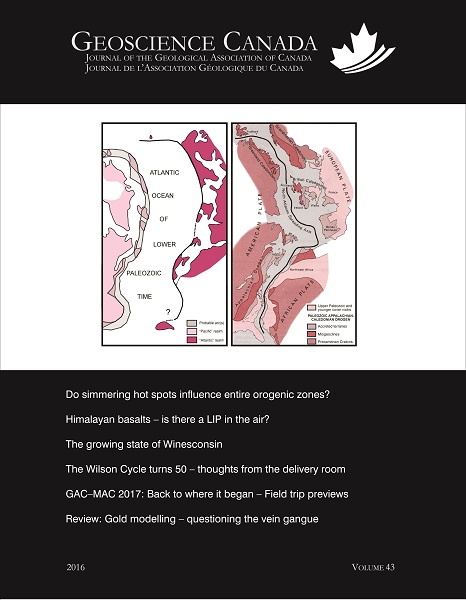Series
Geology and Wine 14. Terroir of Historic Wollersheim Winery, Lake Wisconsin American Viticultural Area
Publié-e 2016-12-15
Comment citer
Karakis, S., Cameron, B., & Kean, W. (2016). Geology and Wine 14. Terroir of Historic Wollersheim Winery, Lake Wisconsin American Viticultural Area. Geoscience Canada, 43(4), 265–282. https://doi.org/10.12789/geocanj.2016.43.107
Résumé
The viticultural history of Wisconsin started in the 1840s, with the very first vine plantings by Hungarian Agoston Haraszthy on the Wollersheim Winery property located in the Lake Wisconsin American Viticultural Area (AVA). This study examines the terroir of historic Wollersheim Winery, the only winery within the confines of the Lake Wisconsin AVA, to understand the interplay of environmental factors influencing the character and quality as well as the variability of Wollersheim wines. Soil texture, chemistry, and mineralogy in conjunction with precision viticulture tools such as electromagnetic induction and electrical resistivity tomography surveys, are utilized in the Wollersheim Winery terroir characterization and observation of spatially variable terroir at the vineyard scale. Establishing and comparing areas of variability at the plot level for two specific vineyard plots (Domaine Reserve and Lot 19) at Wollersheim Winery provides insight into the effects of soil properties and land characteristics on grape and wine production using precision viticulture tools.The viticultural future of Wisconsin looks quite favorable, as the number of wineries keeps rising to meet the demand for Wisconsin wine and local consumption. As climate change continues to affect the grape varieties cultivated across the world’s wine regions, more opportunities arise for Wisconsin to cultivate cool-climate European varieties, in addition to the American and French–American hybrid varieties currently dominating grape production in this glacially influenced wine region.
RÉSUMÉ
L'histoire viticole du Wisconsin a commencé dans les années 1840, avec les premières plantations de vigne par le Hongrois Agoston Haraszthy sur la propriété du vignoble Wollersheim situé dans la région de l’American Viticultural Area (AVA) du lac Wisconsin. Cette étude porte sur le terroir historique du vignoble Wollersheim, le seul à l'intérieur de l’AVA du lac Wisconsin, qui soit soumis à l'interaction des facteurs environnementaux qui influencent le caractère, la qualité et la variabilité des vins Wollersheim. La caractérisation et l’observation des variations spatiales du terroir à l’échelle du vignoble Wollersheim se font par l’étude de la texture du sol, sa chimie et sa minéralogie en conjonction avec des outils de viticulture de précision comme l'induction électromagnétique et la tomographie par résistivité électrique. En définissant des zones de variabilité au niveau de la parcelle et en les comparant pour deux parcelles de vignobles spécifiques (domaine Reserve et lot 19) du vignoble Wollersheim on peut mieux comprendre les effets des propriétés du sol et des caractéristiques du paysage sur la production de raisin et de vin.
Le nombre de vignoble augmentant pour répondre à la demande de vin du Wisconsin et à la demande locale, l'avenir viticole du Wisconsin semble assez prometteur. Comme le changement climatique continue d'influer sur la variétés des cépages cultivés dans les régions viticoles du monde, c’est l’occasion pour le Wisconsin de cultiver des variétés européennes de climat frais, en plus des variétés hybrides américaines et franco–américaines qui dominent actuellement la production de raisin dans ce vin glaciaire région.
